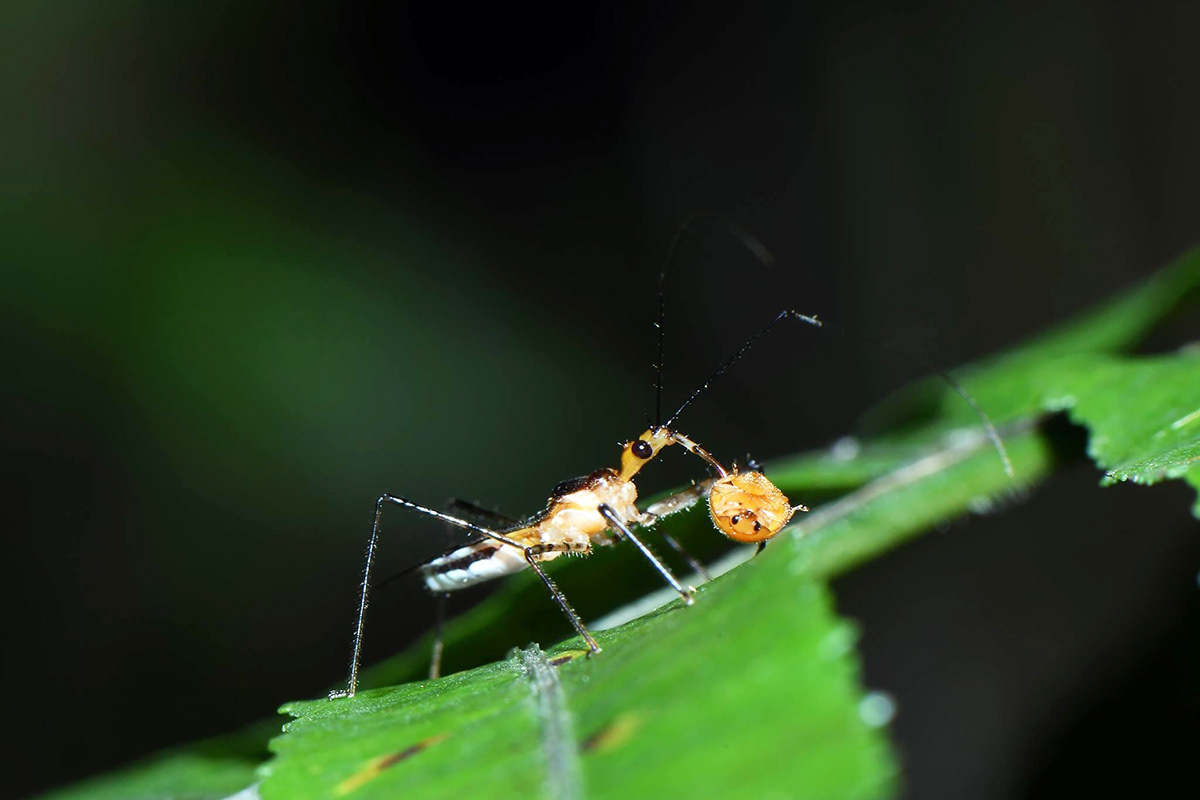
CALIPHAEA CONFUSA
Caliphaea confusa are found in dense pristine forests with small streams. They are among first to appear in early april and disappear at the end of monsoon late september. They are weak flies and are often found resting on ferns near water seepages, breeding in slow jungle streams

SHORT-HORNED GRASSHOPPER

CARPENTER ANT
These ants have been known to construct extensive underground tunneling systems.

ASSASSIN BUG-NYMPH
Front legs of assassin bugs are uniquely designed to provide strong grip of the prey.

CONDYLOSTYLUS MUNDUS
Condylostylus mundus, a species of long-legged fly, is its slender and elongated legs. These legs enable agile aerial maneuvers, aiding in prey capture and predator evasion in forest environments.

FULGORIDAE
An interesting feature of Fulgoridae insects is their striking wing patterns, often resembling intricate designs, which serve purposes like camouflage and mate attraction. Additionally, they possess elongated and slender bodies, contributing to their distinct appearance.

WATER BOATMAN INSECT
Water boatmen are aquatic insects with flattened bodies and paddle-like hind legs, ideal for efficient movement in water. They possess specialized structures called "plastrons" on their abdomen, allowing them to trap air bubbles and breathe underwater. These adaptations enable water boatmen to thrive in freshwater habitats, where they feed on algae and organic matter.

FOREST GIANT-DAMSELFLIE
One unique feature of the forest giant-damselfly is its remarkable size, being one of the largest damselfly species globally. With wingspans reaching up to 19 centimeters (7.5 inches) or more, they stand out in forested environments.

LONG-LEGGED FLIES
Long legged flies sophisticated visual system is a key factor in their success as predators, enabling them to swiftly and accurately capture prey in mid-air.

SCAVENGER FLIES
Scavenger flies are nature's ultimate detectives! 🕵️♂️ With their super-sensitive sense of smell, they can detect the odor of decaying organic matter from a considerable distance, often finding carrion or dung sources before they're visible to the naked eye. 🦟 It's a remarkable example of nature's precision and efficiency. ☘️🔄

MAYFLIES
One unique feature of mayflies (Ephemeroptera) is their short adult lifespan. While the nymph stage can last for months or even years, the adult mayfly typically lives for only a few hours to a few days, depending on the species. This brief period is focused primarily on mating and reproduction. This ephemeral nature makes mayflies fascinating and also poses challenges for their survival strategies and reproductive success.

RAINFOREST DRAGONFLY
This fly plays an important role in balancing our eco-system. The diet of the rainforest dragonfly is mainly carnivorous, as they feed on smaller insects such as flies. The strong jaws of the dragonfly are well designed for crunching meat. They are able to swim and hunt entirely underwater, ambushing small animals such as tadpoles.
